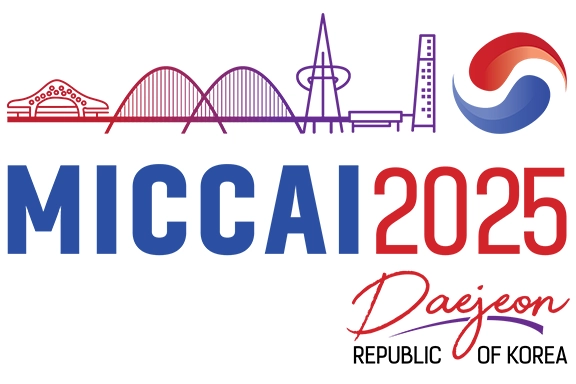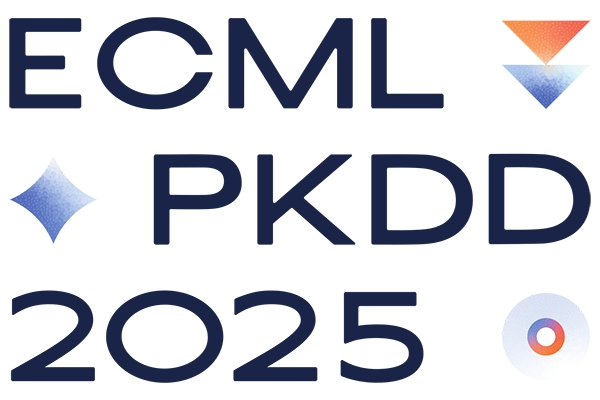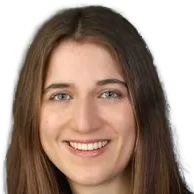05.12.2024

MCML Researchers With 31 Papers at NeurIPS 2024
38th Conference on Neural Information Processing Systems (NeurIPS 2024). Vancouver, Canada, 10.12.2024–15.12.2024
We are happy to announce that MCML researchers are represented with 31 papers at NeurIPS 2024. Congrats to our researchers!
Main Track (23 papers)
Targeted Sequential Indirect Experiment Design.
NeurIPS 2024 - 38th Conference on Neural Information Processing Systems. Vancouver, Canada, Dec 10-15, 2024. URL
Abstract
Scientific hypotheses typically concern specific aspects of complex, imperfectly understood or entirely unknown mechanisms, such as the effect of gene expression levels on phenotypes or how microbial communities influence environmental health. Such queries are inherently causal (rather than purely associational), but in many settings, experiments can not be conducted directly on the target variables of interest, but are indirect. Therefore, they perturb the target variable, but do not remove potential confounding factors. If, additionally, the resulting experimental measurements are multi-dimensional and the studied mechanisms nonlinear, the query of interest is generally not identified. We develop an adaptive strategy to design indirect experiments that optimally inform a targeted query about the ground truth mechanism in terms of sequentially narrowing the gap between an upper and lower bound on the query. While the general formulation consists of a bi-level optimization procedure, we derive an efficiently estimable analytical kernel-based estimator of the bounds for the causal effect, a query of key interest, and demonstrate the efficacy of our approach in confounded, multivariate, nonlinear synthetic settings.
MCML Authors

Elisabeth Ailer
The Challenges of the Nonlinear Regime for Physics-Informed Neural Networks.
NeurIPS 2024 - 38th Conference on Neural Information Processing Systems. Vancouver, Canada, Dec 10-15, 2024. URL
Abstract
The Neural Tangent Kernel (NTK) viewpoint is widely employed to analyze the training dynamics of overparameterized Physics-Informed Neural Networks (PINNs). However, unlike the case of linear Partial Differential Equations (PDEs), we show how the NTK perspective falls short in the nonlinear scenario. Specifically, we establish that the NTK yields a random matrix at initialization that is not constant during training, contrary to conventional belief. Another significant difference from the linear regime is that, even in the idealistic infinite-width limit, the Hessian does not vanish and hence it cannot be disregarded during training. This motivates the adoption of second-order optimization methods. We explore the convergence guarantees of such methods in both linear and nonlinear cases, addressing challenges such as spectral bias and slow convergence. Every theoretical result is supported by numerical examples with both linear and nonlinear PDEs, and we highlight the benefits of second-order methods in benchmark test cases.
MCML Authors

Cristina Cipriani
Dr.
* Former Member
Shaving Weights with Occam's Razor: Bayesian Sparsification for Neural Networks Using the Marginal Likelihood.
NeurIPS 2024 - 38th Conference on Neural Information Processing Systems. Vancouver, Canada, Dec 10-15, 2024. URL
Abstract
Neural network sparsification is a promising avenue to save computational time and memory costs, especially in an age where many successful AI models are becoming too large to naïvely deploy on consumer hardware. While much work has focused on different weight pruning criteria, the overall sparsifiability of the network, i.e., its capacity to be pruned without quality loss, has often been overlooked. We present Sparsifiability via the Marginal likelihood (SpaM), a pruning framework that highlights the effectiveness of using the Bayesian marginal likelihood in conjunction with sparsity-inducing priors for making neural networks more sparsifiable. Our approach implements an automatic Occam’s razor that selects the most sparsifiable model that still explains the data well, both for structured and unstructured sparsification. In addition, we demonstrate that the pre-computed posterior Hessian approximation used in the Laplace approximation can be re-used to define a cheap pruning criterion, which outperforms many existing (more expensive) approaches. We demonstrate the effectiveness of our framework, especially at high sparsity levels, across a range of different neural network architectures and datasets.
MCML Authors
ReNO: Enhancing One-step Text-to-Image Models through Reward-based Noise Optimization.
NeurIPS 2024 - 38th Conference on Neural Information Processing Systems. Vancouver, Canada, Dec 10-15, 2024. URL GitHub
Abstract
Text-to-Image (T2I) models have made significant advancements in recent years, but they still struggle to accurately capture intricate details specified in complex compositional prompts. While fine-tuning T2I models with reward objectives has shown promise, it suffers from ‘reward hacking’ and may not generalize well to unseen prompt distributions. In this work, we propose Reward-based Noise Optimization (ReNO), a novel approach that enhances T2I models at inference by optimizing the initial noise based on the signal from one or multiple human preference reward models. Remarkably, solving this optimization problem with gradient ascent for 50 iterations yields impressive results on four different one-step models across two competitive benchmarks, T2I-CompBench and GenEval. Within a computational budget of 20-50 seconds, ReNO-enhanced one-step models consistently surpass the performance of all current open-source Text-to-Image models. Extensive user studies demonstrate that our model is preferred nearly twice as often compared to the popular SDXL model and is on par with the proprietary Stable Diffusion 3 with 8B parameters. Moreover, given the same computational resources, a ReNO-optimized one-step model outperforms widely-used open-source models such as SDXL and PixArt-α, highlighting the efficiency and effectiveness of ReNO in enhancing T2I model performance at inference time.
MCML Authors
Non-Asymptotic Uncertainty Quantification in High-Dimensional Learning.
NeurIPS 2024 - 38th Conference on Neural Information Processing Systems. Vancouver, Canada, Dec 10-15, 2024. URL
Abstract
Uncertainty quantification (UQ) is a crucial but challenging task in many high-dimensional regression or learning problems to increase the confidence of a given predictor. We develop a new data-driven approach for UQ in regression that applies both to classical regression approaches such as the LASSO as well as to neural networks. One of the most notable UQ techniques is the debiased LASSO, which modifies the LASSO to allow for the construction of asymptotic confidence intervals by decomposing the estimation error into a Gaussian and an asymptotically vanishing bias component. However, in real-world problems with finite-dimensional data, the bias term is often too significant to be neglected, resulting in overly narrow confidence intervals. Our work rigorously addresses this issue and derives a data-driven adjustment that corrects the confidence intervals for a large class of predictors by estimating the means and variances of the bias terms from training data, exploiting high-dimensional concentration phenomena. This gives rise to non-asymptotic confidence intervals, which can help avoid overestimating uncertainty in critical applications such as MRI diagnosis. Importantly, our analysis extends beyond sparse regression to data-driven predictors like neural networks, enhancing the reliability of model-based deep learning. Our findings bridge the gap between established theory and the practical applicability of such debiased methods.
MCML Authors
Conformalized Credal Set Predictors.
NeurIPS 2024 - 38th Conference on Neural Information Processing Systems. Vancouver, Canada, Dec 10-15, 2024. URL
Abstract
Credal sets are sets of probability distributions that are considered as candidates for an imprecisely known ground-truth distribution. In machine learning, they have recently attracted attention as an appealing formalism for uncertainty representation, in particular due to their ability to represent both the aleatoric and epistemic uncertainty in a prediction. However, the design of methods for learning credal set predictors remains a challenging problem. In this paper, we make use of conformal prediction for this purpose. More specifically, we propose a method for predicting credal sets in the classification task, given training data labeled by probability distributions. Since our method inherits the coverage guarantees of conformal prediction, our conformal credal sets are guaranteed to be valid with high probability (without any assumptions on model or distribution). We demonstrate the applicability of our method to natural language inference, a highly ambiguous natural language task where it is common to obtain multiple annotations per example.
MCML Authors
GlotCC: An Open Broad-Coverage CommonCrawl Corpus and Pipeline for Minority Languages.
NeurIPS 2024 - 38th Conference on Neural Information Processing Systems. Vancouver, Canada, Dec 10-15, 2024. URL
Abstract
The need for large text corpora has increased with the advent of pretrained language models and, in particular, the discovery of scaling laws for these models. Most available corpora have sufficient data only for languages with large dominant communities. However, there is no corpus available that (i) covers a wide range of minority languages; (ii) is generated by an open-source reproducible pipeline; and (iii) is rigorously cleaned from noise, making it trustworthy to use. We present GlotCC, a clean, document-level, 2TB general domain corpus derived from CommonCrawl, covering more than 1000 languages. We make GlotCC and the system used to generate it - including the pipeline, language identification model, and filters - available to the research community.
MCML Authors
APEBench: A Benchmark for Autoregressive Neural Emulators of PDEs.
NeurIPS 2024 - 38th Conference on Neural Information Processing Systems. Vancouver, Canada, Dec 10-15, 2024. URL GitHub
Abstract
We introduce the Autoregressive PDE Emulator Benchmark (APEBench), a comprehensive benchmark suite to evaluate autoregressive neural emulators for solving partial differential equations. APEBench is based on JAX and provides a seamlessly integrated differentiable simulation framework employing efficient pseudo-spectral methods, enabling 46 distinct PDEs across 1D, 2D, and 3D. Facilitating systematic analysis and comparison of learned emulators, we propose a novel taxonomy for unrolled training and introduce a unique identifier for PDE dynamics that directly relates to the stability criteria of classical numerical methods. APEBench enables the evaluation of diverse neural architectures, and unlike existing benchmarks, its tight integration of the solver enables support for differentiable physics training and neural-hybrid emulators. Moreover, APEBench emphasizes rollout metrics to understand temporal generalization, providing insights into the long-term behavior of emulating PDE dynamics. In several experiments, we highlight the similarities between neural emulators and numerical simulators.
MCML Authors
Expected Probabilistic Hierarchies.
NeurIPS 2024 - 38th Conference on Neural Information Processing Systems. Vancouver, Canada, Dec 10-15, 2024. URL
Abstract
Hierarchical clustering has usually been addressed by discrete optimization using heuristics or continuous optimization of relaxed scores for hierarchies. In this work, we propose to optimize expected scores under a probabilistic model over hierarchies. (1) We show theoretically that the global optimal values of the expected Dasgupta cost and Tree-Sampling divergence (TSD), two unsupervised metrics for hierarchical clustering, are equal to the optimal values of their discrete counterparts contrary to some relaxed scores. (2) We propose Expected Probabilistic Hierarchies (EPH), a probabilistic model to learn hierarchies in data by optimizing expected scores. EPH uses differentiable hierarchy sampling enabling end-to-end gradient descent based optimization, and an unbiased subgraph sampling approach to scale to large datasets. (3) We evaluate EPH on synthetic and real-world datasets including vector and graph datasets. EPH outperforms all other approaches quantitatively and provides meaningful hierarchies in qualitative evaluations.
MCML Authors
DiffPO: A causal diffusion model for learning distributions of potential outcomes.
NeurIPS 2024 - 38th Conference on Neural Information Processing Systems. Vancouver, Canada, Dec 10-15, 2024. URL
Abstract
Predicting potential outcomes of interventions from observational data is crucial for decision-making in medicine, but the task is challenging due to the fundamental problem of causal inference. Existing methods are largely limited to point estimates of potential outcomes with no uncertain quantification; thus, the full information about the distributions of potential outcomes is typically ignored. In this paper, we propose a novel causal diffusion model called DiffPO, which is carefully designed for reliable inferences in medicine by learning the distribution of potential outcomes. In our DiffPO, we leverage a tailored conditional denoising diffusion model to learn complex distributions, where we address the selection bias through a novel orthogonal diffusion loss. Another strength of our DiffPO method is that it is highly flexible (e.g., it can also be used to estimate different causal quantities such as CATE). Across a wide range of experiments, we show that our method achieves state-of-the-art performance.
MCML Authors
A Canonicalization Perspective on Invariant and Equivariant Learning.
NeurIPS 2024 - 38th Conference on Neural Information Processing Systems. Vancouver, Canada, Dec 10-15, 2024. URL GitHub
Abstract
In many applications, we desire neural networks to exhibit invariance or equivariance to certain groups due to symmetries inherent in the data. Recently, frame-averaging methods emerged to be a unified framework for attaining symmetries efficiently by averaging over input-dependent subsets of the group, i.e., frames. What we currently lack is a principled understanding of the design of frames. In this work, we introduce a canonicalization perspective that provides an essential and complete view of the design of frames. Canonicalization is a classic approach for attaining invariance by mapping inputs to their canonical forms. We show that there exists an inherent connection between frames and canonical forms. Leveraging this connection, we can efficiently compare the complexity of frames as well as determine the optimality of certain frames. Guided by this principle, we design novel frames for eigenvectors that are strictly superior to existing methods – some are even optimal – both theoretically and empirically. The reduction to the canonicalization perspective further uncovers equivalences between previous methods. These observations suggest that canonicalization provides a fundamental understanding of existing frame-averaging methods and unifies existing equivariant and invariant learning methods.
MCML Authors
Quantifying Aleatoric Uncertainty of the Treatment Effect: A Novel Orthogonal Learner.
NeurIPS 2024 - 38th Conference on Neural Information Processing Systems. Vancouver, Canada, Dec 10-15, 2024. URL
Abstract
Estimating causal quantities from observational data is crucial for understanding the safety and effectiveness of medical treatments. However, to make reliable inferences, medical practitioners require not only estimating averaged causal quantities, such as the conditional average treatment effect, but also understanding the randomness of the treatment effect as a random variable. This randomness is referred to as aleatoric uncertainty and is necessary for understanding the probability of benefit from treatment or quantiles of the treatment effect. Yet, the aleatoric uncertainty of the treatment effect has received surprisingly little attention in the causal machine learning community. To fill this gap, we aim to quantify the aleatoric uncertainty of the treatment effect at the individualized (covariate-conditional) level, namely, the conditional distribution of the treatment effect (CDTE). Unlike average causal quantities, the CDTE is not point identifiable without strong additional assumptions. As a remedy, we employ partial identification to obtain sharp bounds on the CDTE and thereby quantify the aleatoric uncertainty of the treatment effect. We then develop a novel, orthogonal learner for the bounds on the CDTE, which we call AU-learner. We further show that our AU-learner has several strengths in that it satisfies Neyman-orthogonality and is doubly robust. Finally, we propose a fully-parametric deep learning instantiation of our AU-learner.
MCML Authors
shapiq: Shapley Interactions for Machine Learning.
NeurIPS 2024 - 38th Conference on Neural Information Processing Systems. Vancouver, Canada, Dec 10-15, 2024. URL GitHub
Abstract
Originally rooted in game theory, the Shapley Value (SV) has recently become an important tool in machine learning research. Perhaps most notably, it is used for feature attribution and data valuation in explainable artificial intelligence. Shapley Interactions (SIs) naturally extend the SV and address its limitations by assigning joint contributions to groups of entities, which enhance understanding of black box machine learning models. Due to the exponential complexity of computing SVs and SIs, various methods have been proposed that exploit structural assumptions or yield probabilistic estimates given limited resources. In this work, we introduce shapiq, an open-source Python package that unifies state-of-the-art algorithms to efficiently compute SVs and any-order SIs in an application-agnostic framework. Moreover, it includes a benchmarking suite containing 11 machine learning applications of SIs with pre-computed games and ground-truth values to systematically assess computational performance across domains. For practitioners, shapiq is able to explain and visualize any-order feature interactions in predictions of models, including vision transformers, language models, as well as XGBoost and LightGBM with TreeSHAP-IQ. With shapiq, we extend shap beyond feature attributions and consolidate the application of SVs and SIs in machine learning that facilitates future research.
MCML Authors
Reshuffling Resampling Splits Can Improve Generalization of Hyperparameter Optimization.
NeurIPS 2024 - 38th Conference on Neural Information Processing Systems. Vancouver, Canada, Dec 10-15, 2024. URL GitHub
Abstract
Hyperparameter optimization is crucial for obtaining peak performance of machine learning models. The standard protocol evaluates various hyperparameter configurations using a resampling estimate of the generalization error to guide optimization and select a final hyperparameter configuration. Without much evidence, paired resampling splits, i.e., either a fixed train-validation split or a fixed cross-validation scheme, are often recommended. We show that, surprisingly, reshuffling the splits for every configuration often improves the final model’s generalization performance on unseen data. Our theoretical analysis explains how reshuffling affects the asymptotic behavior of the validation loss surface and provides a bound on the expected regret in the limiting regime. This bound connects the potential benefits of reshuffling to the signal and noise characteristics of the underlying optimization problem. We confirm our theoretical results in a controlled simulation study and demonstrate the practical usefulness of reshuffling in a large-scale, realistic hyperparameter optimization experiment. While reshuffling leads to test performances that are competitive with using fixed splits, it drastically improves results for a single train-validation holdout protocol and can often make holdout become competitive with standard CV while being computationally cheaper.
MCML Authors
Weisfeiler and Leman Go Loopy: A New Hierarchy for Graph Representational Learning.
NeurIPS 2024 - 38th Conference on Neural Information Processing Systems. Vancouver, Canada, Dec 10-15, 2024. URL GitHub
Abstract
We introduce r-loopy Weisfeiler-Leman (r-ℓWL), a novel hierarchy of graph isomorphism tests and a corresponding GNN framework, r-ℓMPNN, that can count cycles up to length r+2. Most notably, we show that r-ℓWL can count homomorphisms of cactus graphs. This strictly extends classical 1-WL, which can only count homomorphisms of trees and, in fact, is incomparable to k-WL for any fixed k. We empirically validate the expressive and counting power of the proposed r-ℓMPNN on several synthetic datasets and present state-of-the-art predictive performance on various real-world datasets.
MCML Authors
A Functional Extension of Semi-Structured Networks.
NeurIPS 2024 - 38th Conference on Neural Information Processing Systems. Vancouver, Canada, Dec 10-15, 2024. URL
Abstract
Semi-structured networks (SSNs) merge the structures familiar from additive models with deep neural networks, allowing the modeling of interpretable partial feature effects while capturing higher-order non-linearities at the same time. A significant challenge in this integration is maintaining the interpretability of the additive model component. Inspired by large-scale biomechanics datasets, this paper explores extending SSNs to functional data. Existing methods in functional data analysis are promising but often not expressive enough to account for all interactions and non-linearities and do not scale well to large datasets. Although the SSN approach presents a compelling potential solution, its adaptation to functional data remains complex. In this work, we propose a functional SSN method that retains the advantageous properties of classical functional regression approaches while also improving scalability. Our numerical experiments demonstrate that this approach accurately recovers underlying signals, enhances predictive performance, and performs favorably compared to competing methods.
MCML Authors
Excluding the Irrelevant: Focusing Reinforcement Learning through Continuous Action Masking.
NeurIPS 2024 - 38th Conference on Neural Information Processing Systems. Vancouver, Canada, Dec 10-15, 2024. URL
Abstract
Continuous action spaces in reinforcement learning (RL) are commonly defined as multidimensional intervals. While intervals usually reflect the action boundaries for tasks well, they can be challenging for learning because the typically large global action space leads to frequent exploration of irrelevant actions. Yet, little task knowledge can be sufficient to identify significantly smaller state-specific sets of relevant actions. Focusing learning on these relevant actions can significantly improve training efficiency and effectiveness. In this paper, we propose to focus learning on the set of relevant actions and introduce three continuous action masking methods for exactly mapping the action space to the state-dependent set of relevant actions. Thus, our methods ensure that only relevant actions are executed, enhancing the predictability of the RL agent and enabling its use in safety-critical applications. We further derive the implications of the proposed methods on the policy gradient. Using proximal policy optimization (PPO), we evaluate our methods on four control tasks, where the relevant action set is computed based on the system dynamics and a relevant state set. Our experiments show that the three action masking methods achieve higher final rewards and converge faster than the baseline without action masking.
MCML Authors

Philipp Gassert
* Former Member
A Practitioner's Guide to Real-World Continual Multimodal Pretraining.
NeurIPS 2024 - 38th Conference on Neural Information Processing Systems. Vancouver, Canada, Dec 10-15, 2024. URL GitHub
Abstract
Multimodal foundation models serve numerous applications at the intersection of vision and language. Still, despite being pretrained on extensive data, they become outdated over time. To keep models updated, research into continual pretraining mainly explores scenarios with either (1) infrequent, indiscriminate updates on large-scale new data, or (2) frequent, sample-level updates. However, practical model deployment often operates in the gap between these two limit cases, as real-world applications often demand adaptation to specific subdomains, tasks or concepts – spread over the entire, varying life cycle of a model. In this work, we complement current perspectives on continual pretraining through a research test bed as well as provide comprehensive guidance for effective continual model updates in such scenarios. We first introduce FoMo-in-Flux, a continual multimodal pretraining benchmark with realistic compute constraints and practical deployment requirements, constructed over 63 datasets with diverse visual and semantic coverage. Using FoMo-in-Flux, we explore the complex landscape of practical continual pretraining through multiple perspectives: (1) A data-centric investigation of data mixtures and stream orderings that emulate real-world deployment situations, (2) a method-centric investigation ranging from simple fine-tuning and traditional continual learning strategies to parameter-efficient updates and model merging, (3) meta learning rate schedules and mechanistic design choices, and (4) the influence of model and compute scaling. Together, our insights provide a practitioner’s guide to continual multimodal pretraining for real-world deployment.
MCML Authors
Stable-Pose: Leveraging Transformers for Pose-Guided Text-to-Image Generation.
NeurIPS 2024 - 38th Conference on Neural Information Processing Systems. Vancouver, Canada, Dec 10-15, 2024. URL GitHub
Abstract
Controllable text-to-image (T2I) diffusion models have shown impressive performance in generating high-quality visual content through the incorporation of various conditions. Current methods, however, exhibit limited performance when guided by skeleton human poses, especially in complex pose conditions such as side or rear perspectives of human figures. To address this issue, we present Stable-Pose, a novel adapter model that introduces a coarse-to-fine attention masking strategy into a vision Transformer (ViT) to gain accurate pose guidance for T2I models. Stable-Pose is designed to adeptly handle pose conditions within pre-trained Stable Diffusion, providing a refined and efficient way of aligning pose representation during image synthesis. We leverage the query-key self-attention mechanism of ViTs to explore the interconnections among different anatomical parts in human pose skeletons. Masked pose images are used to smoothly refine the attention maps based on target pose-related features in a hierarchical manner, transitioning from coarse to fine levels. Additionally, our loss function is formulated to allocate increased emphasis to the pose region, thereby augmenting the model’s precision in capturing intricate pose details. We assessed the performance of Stable-Pose across five public datasets under a wide range of indoor and outdoor human pose scenarios. Stable-Pose achieved an AP score of 57.1 in the LAION-Human dataset, marking around 13% improvement over the established technique ControlNet.
MCML Authors
Understanding the Role of Equivariance in Self-supervised Learning.
NeurIPS 2024 - 38th Conference on Neural Information Processing Systems. Vancouver, Canada, Dec 10-15, 2024. URL GitHub
Abstract
Contrastive learning has been a leading paradigm for self-supervised learning, but it is widely observed that it comes at the price of sacrificing useful features (eg colors) by being invariant to data augmentations. Given this limitation, there has been a surge of interest in equivariant self-supervised learning (E-SSL) that learns features to be augmentation-aware. However, even for the simplest rotation prediction method, there is a lack of rigorous understanding of why, when, and how E-SSL learns useful features for downstream tasks. To bridge this gap between practice and theory, we establish an information-theoretic perspective to understand the generalization ability of E-SSL. In particular, we identify a critical explaining-away effect in E-SSL that creates a synergy between the equivariant and classification tasks. This synergy effect encourages models to extract class-relevant features to improve its equivariant prediction, which, in turn, benefits downstream tasks requiring semantic features. Based on this perspective, we theoretically analyze the influence of data transformations and reveal several principles for practical designs of E-SSL. Our theory not only aligns well with existing E-SSL methods but also sheds light on new directions by exploring the benefits of model equivariance. We believe that a theoretically grounded understanding on the role of equivariance would inspire more principled and advanced designs in this field.
MCML Authors
A Theoretical Understanding of Self-Correction through In-context Alignment.
NeurIPS 2024 - 38th Conference on Neural Information Processing Systems. Vancouver, Canada, Dec 10-15, 2024. URL GitHub
Abstract
Going beyond mimicking limited human experiences, recent studies show initial evidence that, like humans, large language models (LLMs) are capable of improving their abilities purely by self-correction, i.e., correcting previous responses through self-examination, in certain circumstances. Nevertheless, little is known about how such capabilities arise. In this work, based on a simplified setup akin to an alignment task, we theoretically analyze self-correction from an in-context learning perspective, showing that when LLMs give relatively accurate self-examinations as rewards, they are capable of refining responses in an in-context way. Notably, going beyond previous theories on over-simplified linear transformers, our theoretical construction underpins the roles of several key designs of realistic transformers for self-correction: softmax attention, multi-head attention, and the MLP block. We validate these findings extensively on synthetic datasets. Inspired by these findings, we also illustrate novel applications of self-correction, such as defending against LLM jailbreaks, where a simple self-correction step does make a large difference. We believe that these findings will inspire further research on understanding, exploiting, and enhancing self-correction for building better foundation models.
MCML Authors
Autoregressive Policy Optimization for Constrained Allocation Tasks.
NeurIPS 2024 - 38th Conference on Neural Information Processing Systems. Vancouver, Canada, Dec 10-15, 2024. URL GitHub
Abstract
Allocation tasks represent a class of problems where a limited amount of resources must be allocated to a set of entities at each time step. Prominent examples of this task include portfolio optimization or distributing computational workloads across servers. Allocation tasks are typically bound by linear constraints describing practical requirements that have to be strictly fulfilled at all times. In portfolio optimization, for example, investors may be obligated to allocate less than 30% of the funds into a certain industrial sector in any investment period. Such constraints restrict the action space of allowed allocations in intricate ways, which makes learning a policy that avoids constraint violations difficult. In this paper, we propose a new method for constrained allocation tasks based on an autoregressive process to sequentially sample allocations for each entity. In addition, we introduce a novel de-biasing mechanism to counter the initial bias caused by sequential sampling. We demonstrate the superior performance of our approach compared to a variety of Constrained Reinforcement Learning (CRL) methods on three distinct constrained allocation tasks: portfolio optimization, computational workload distribution, and a synthetic allocation benchmark.
MCML Authors

Maximilian Bernhard
Dr.
* Former Member
Are Graph Neural Networks Optimal Approximation Algorithms?
NeurIPS 2024 - 38th Conference on Neural Information Processing Systems. Vancouver, Canada, Dec 10-15, 2024. URL
Abstract
In this work we design graph neural network architectures that capture optimal approximation algorithms for a large class of combinatorial optimization problems, using powerful algorithmic tools from semidefinite programming (SDP). Concretely, we prove that polynomial-sized message-passing algorithms can represent the most powerful polynomial time algorithms for Max Constraint Satisfaction Problems assuming the Unique Games Conjecture. We leverage this result to construct efficient graph neural network architectures, OptGNN, that obtain high-quality approximate solutions on landmark combinatorial optimization problems such as Max-Cut, Min-Vertex-Cover, and Max-3-SAT. Our approach achieves strong empirical results across a wide range of real-world and synthetic datasets against solvers and neural baselines. Finally, we take advantage of OptGNN’s ability to capture convex relaxations to design an algorithm for producing bounds on the optimal solution from the learned embeddings of OptGNN.
MCML Authors
Workshops (8 papers)
Probabilistic predictions with Fourier neural operators.
BDU @NeurIPS 2024 - Workshop Bayesian Decision-making and Uncertainty: from probabilistic and spatiotemporal modeling to sequential experiment design at the 38th Conference on Neural Information Processing Systems. Vancouver, Canada, Dec 10-15, 2024. URL
Abstract
Neural networks have been successfully applied in modeling partial differential equations, especially in dynamical systems. Commonly used models, such as neural operators, are performing well at deterministic prediction tasks, but lack a quantification of the uncertainty inherent in many complex systems, for example weather forecasting. In this paper, we explore a new approach that combines Fourier neural operators with generative modeling based on strictly proper scoring rules in order to create well-calibrated probabilistic predictions of dynamical systems. We demonstrate improved predictive uncertainty for our approach, especially in settings with very high inherent uncertainty.
MCML Authors
Variational Low-Rank Adaptation Using IVON.
FITML @NeurIPS 2024 - Workshop Fine-Tuning in Modern Machine Learning: Principles and Scalability at the 38th Conference on Neural Information Processing Systems. Vancouver, Canada, Dec 10-15, 2024. URL GitHub
Abstract
We show that variational learning can significantly improve the accuracy and calibration of Low-Rank Adaptation (LoRA) without a substantial increase in the cost. We replace AdamW by the Improved Variational Online Newton (IVON) algorithm to finetune large language models. For Llama-2 with 7 billion parameters, IVON improves the accuracy over AdamW by 2.8% and expected calibration error by 4.6%. The accuracy is also better than the other Bayesian alternatives, yet the cost is lower and the implementation is easier. Our work provides additional evidence for the effectiveness of IVON for large language models.
MCML Authors

Yuesong Shen
Dr.
* Former Member
Provable Robustness of (Graph) Neural Networks Against Data Poisoning and Backdoor Attacks.
AdvML-Frontiers @NeurIPS 2024 - 3rd Workshop on New Frontiers in Adversarial Machine Learning at the 38th Conference on Neural Information Processing Systems. Vancouver, Canada, Dec 10-15, 2024. URL
Abstract
Generalization of machine learning models can be severely compromised by data poisoning, where adversarial changes are applied to the training data. This vulnerability has led to interest in certifying (i.e., proving) that such changes up to a certain magnitude do not affect test predictions. We, for the first time, certify Graph Neural Networks (GNNs) against poisoning attacks, including backdoors, targeting the node features of a given graph. Our certificates are white-box and based upon (i) the neural tangent kernel, which characterizes the training dynamics of sufficiently wide networks; and (ii) a novel reformulation of the bilevel optimization describing poisoning as a mixed-integer linear program. We note that our framework is more general and constitutes the first approach to derive white-box poisoning certificates for NNs, which can be of independent interest beyond graph-related tasks.
MCML Authors
Incremental Uncertainty-aware Performance Monitoring with Labeling Intervention.
BDU @NeurIPS 2024 - Workshop Bayesian Decision-making and Uncertainty: from probabilistic and spatiotemporal modeling to sequential experiment design at the 38th Conference on Neural Information Processing Systems. Vancouver, Canada, Dec 10-15, 2024. URL
Abstract
We study the problem of monitoring machine learning models under temporal distribution shifts, where circumstances change gradually over time, often leading to unnoticed yet significant declines in accuracy. We propose Incremental Uncertainty-aware Performance Monitoring (IUPM), a novel label-free method that estimates model performance by modeling time-dependent shifts using optimal transport. IUPM also quantifies uncertainty in performance estimates and introduces an active labeling strategy to reduce this uncertainty. We further showcase the benefits of IUPM on different datasets and simulated temporal shifts over existing baselines.
MCML Authors
Towards Localization via Data Embedding for TabPFN.
TLR @NeurIPS 2024 - 3rd Table Representation Learning Workshop at the 38th Conference on Neural Information Processing Systems. Vancouver, Canada, Dec 10-15, 2024. URL
Abstract
Prior-data fitted networks (PFNs), especially TabPFN, have shown significant promise in tabular data prediction. However, their scalability is limited by the quadratic complexity of the transformer architecture’s attention across training points. In this work, we propose a method to localize TabPFN, which embeds data points into a learned representation and performs nearest neighbor selection in this space. We evaluate it across six datasets, demonstrating its superior performance over standard TabPFN when scaling to larger datasets. We also explore its design choices and analyze the bias-variance trade-off of this localization method, showing that it reduces bias while maintaining manageable variance. This work opens up a pathway for scaling TabPFN to arbitrarily large tabular datasets.
MCML Authors
Challenges in Explaining Representational Similarity through Identifiability.
UniReps @NeurIPS 2024 - 2nd Workshop on Unifying Representations in Neural Models at the 37th Conference on Neural Information Processing Systems. Vancouver, Canada, Dec 10-15, 2024. URL
Abstract
The phenomenon of different deep learning models producing similar data representations has garnered significant attention, raising the question of why such representational similarity occurs. Identifiability theory offers a partial explanation: for a broad class of discriminative models, including many popular in representation learning, those assigning equal likelihood to the observations yield representations that are equal up to a linear transformation, if a suitable diversity condition holds. In this work, we identify two key challenges in applying identifiability theory to explain representational similarity. First, the assumption of exact likelihood equality is rarely satisfied by practical models trained with different initializations. To address this, we describe how the representations of two models deviate from being linear transformations of each other, based on their difference in log-likelihoods. Second, we demonstrate that even models with similar and near-optimal loss values can produce highly dissimilar representations due to an underappreciated difference between loss and likelihood. Our findings highlight key open questions and point to future research directions for advancing the theoretical understanding of representational similarity.
MCML Authors
Projected Neural Differential Equations for Power Grid Modeling with Constraints.
D3S3 @NeurIPS 2024 - Workshop on Data-driven and Differentiable Simulations, Surrogates, and Solvers at the 38th Conference on Neural Information Processing Systems. Vancouver, Canada, Dec 10-15, 2024. URL
Abstract
Neural differential equations offer a powerful approach for data-driven simulation. However, many applications in science and engineering possess known constraints that should be obeyed by the learned model. We introduce projected neural differential equations (PNDEs), a new method for constraining neural differential equations based on projection of the learned vector field to the tangent space of the constraint manifold. In tests on two challenging examples from power grid modeling, PNDEs outperform existing methods while requiring fewer hyperparameters. Our approach demonstrates significant potential for enhancing the modeling of constrained dynamical systems, particularly in complex domains like power grid dynamics where accuracy and reliability are essential.
MCML Authors
FinerCut: Finer-grained Interpretable Layer Pruning for Large Language Models.
Compression Workshop @NeurIPS 2024 - Workshop on Machine Learning and Compression at the 38th Conference on Neural Information Processing Systems. Vancouver, Canada, Dec 10-15, 2024. URL
Abstract
Overparametrized transformer networks are the state-of-the-art architecture for Large Language Models (LLMs). However, such models contain billions of parameters making large compute a necessity, while raising environmental concerns. To address these issues, we propose FinerCut, a new form of fine-grained layer pruning, which in contrast to prior work at the transformer block level, considers all self-attention and feed-forward network (FFN) layers within blocks as individual pruning candidates. FinerCut prunes layers whose removal causes minimal alternation to the model’s output – contributing to a new, lean, interpretable, and task-agnostic pruning method. Tested across 9 benchmarks, our approach retains 90% performance of Llama3-8B with 25% layers removed, and 95% performance of Llama3-70B with 30% layers removed, all without fine-tuning or post-pruning reconstruction. Strikingly, we observe intriguing results with FinerCut: 42% (34 out of 80) of the self-attention layers in Llama3-70B can be removed while preserving 99% of its performance – without additional fine-tuning after removal. Moreover, FinerCut provides a tool to inspect the types and locations of pruned layers, allowing to observe interesting pruning behaviors. For instance, we observe a preference for pruning self-attention layers, often at deeper consecutive decoder layers. We hope our insights inspire future efficient LLM architecture designs.
MCML Authors
05.12.2024
Related

22.09.2025
Predicting Health With AI - With Researcher Simon Schallmoser
Simon Schallmoser uses AI to predict health risks, detect low blood sugar in drivers, and advance personalized, safer healthcare.

19.09.2025
MCML Researchers With 24 Papers at MICCAI 2025
28th International Conference on Medical Image Computing and Computer Assisted Intervention (MICCAI 2025). Daejeon, Republic of Korea, 23.09.2025 - 27.09.2025

15.09.2025
Robots Seeing in the Dark - With Researcher Yannick Burkhardt
Yannick Burkhardt erforscht Event-Kameras, die Robotern ermöglichen, blitzschnell zu reagieren und auch im Dunkeln zu sehen.

12.09.2025
MCML Researchers With Eight Papers at ECML-PKDD 2025
European Conference on Machine Learning and Principles and Practice of Knowledge Discovery in Database (ECML-PKDD 2025). Porto, Portugal, 15.09.2025 - 19.09.2025




















































